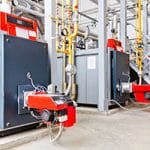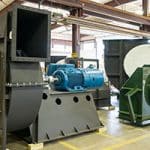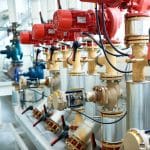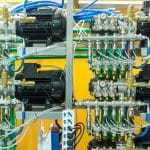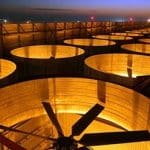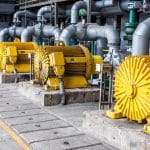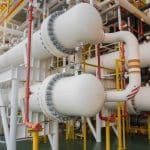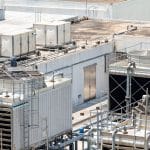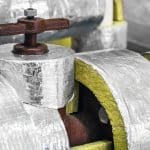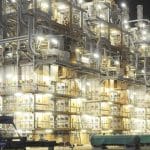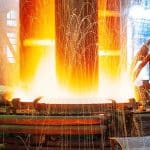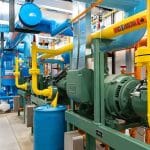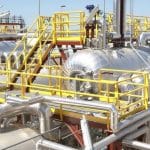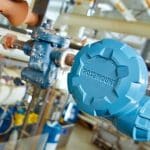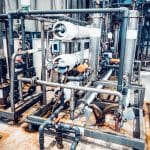The 3 kEys
- LED technology is more energy efficient than HID, incandescent, and fluorescent by at least 50%.
- Higher output LEDs enable the Facilities Manager to install fewer of them, reducing installation cost.
- LED light quality is far superior to older lighting technologies, available in Color Rendering Index packages very close to pure sunlight.
In today’s world, lighting systems are no longer merely functional; they play a critical role in energy management, cost efficiency, and creating comfortable, productive environments. With recent advancements, lighting technology today offers smarter, more effective solutions that not only reduce energy consumption but also enhance the overall quality of industrial spaces.
Switching to LED lighting is one of the highest ROI upgrades a facility can make in pursuit of energy efficiency and operational cost reduction. Compared to traditional incandescent, fluorescent, or metal halide fixtures, LEDs consume significantly less energy, and this efficiency stems from their ability to convert a higher percentage of electrical energy into visible light, in stark contrast to wasting it as heat, a common drawback of the older lighting technologies. As a result, LEDs can reduce overall energy consumption by 50% to 80%, depending on the application; sometimes in excess of 90% when married to advanced, networked control systems.
The superior luminosity of LED fixtures also plays a crucial role in minimizing the number of installations required to achieve the necessary light levels. High-output LEDs typically deliver more lumens per watt, allowing for fewer fixtures while maintaining or improving illumination quality. In high bay environments, such as manufacturing and food processing facilities or warehouses, this translates into reduced infrastructure costs, lower power demand, and significant savings in long-term maintenance. With fewer fixtures to install, repair, and replace, businesses can allocate resources elsewhere, improving operational efficiency without sacrificing lighting performance.
LEDs in Manufacturing and Industrial Applications
Beyond energy efficiency, LEDs offer superior lighting quality that is critical in industries where precision and visual clarity are essential. One of the defining characteristics of LED technology is its high Color Rendering Index (CRI), which ensures accurate color representation. In manufacturing environments—such as automotive painting, textile production, food processing, or electronics assembly—color accuracy directly impacts product quality and consistency. A high CRI allows workers to identify defects, assess materials accurately, and maintain strict quality control standards, reducing errors and rework.
LEDs also provide an unmatched level of adaptability. Unlike traditional lighting solutions that offer limited control over brightness and color temperature, LEDs support dimming and tunable white light technology. This flexibility enables facilities to adjust lighting conditions based on task requirements, time of day, or specific workstations. Cooler, daylight-like tones enhance concentration and alertness, making them ideal for precision work, while warmer tones can create a more comfortable environment in areas where workers need to reduce eye strain.
In addition, this adaptability extends to human-centric lighting strategies, which take into account workers’ circadian rhythms. By modulating light intensity and color temperature throughout the day, LED systems can support productivity, reduce fatigue, and create a more ergonomic workspace. This capability is particularly beneficial in facilities that operate around the clock, ensuring that lighting conditions remain optimized for both day and night shifts.
In essence, the transition to LED lighting is far more than an energy-saving measure; it is a strategic investment in efficiency, precision, and workplace adaptability. With their ability to reduce operational costs, enhance visual clarity, and integrate seamlessly with smart technologies, LEDs represent the future of industrial lighting, offering a comprehensive solution for businesses looking to maximize performance while minimizing waste.
The Balance Between Efficiency and Shadowing
In manufacturing facilities, proper lighting isn’t just about visibility—it’s about safety, productivity, and cost efficiency. One approach gaining traction is using higher output luminaires while reducing the total number of fixtures. This strategy offers clear benefits, but it also comes with potential challenges, particularly in the form of shadowing.
A major advantage of utilizing newer higher-output luminaires is the overall energy efficiency they bring. By reducing the overall fixture count, manufacturers can lower energy consumption, cutting both electricity costs and long-term operational expenses. Fewer luminaires also mean less wiring, reduced installation labor, and a simpler lighting infrastructure. And maintenance becomes far easier when there are fewer fixtures to service, which is particularly beneficial in high bay environments where access to lighting requires lifts or scaffolding.
Beyond cost savings, high-output fixtures are often designed with advanced thermal management, leading to longer lifespans and better performance over time. With proper beam angles and optics, they can provide broad, uniform light distribution, effectively reducing over-lit areas while maintaining sufficient illumination where it matters most. However, this approach comes with a critical consideration: shadowing.
While fewer fixtures may seem like a streamlined solution, they can create problematic shadows if the Facilities Manager doesn’t plan carefully. In a facility filled with racking, large machinery, and moving personnel, shadows can form unpredictably, making it harder for workers to see critical details. In environments where precision is key—such as food processing, assembly lines, or quality inspection areas—these shadows can lead to errors or inefficiencies. Be sure to utilize lighting design software if you’re preparing for a new lighting system or retrofit project.
The Upper Levels of the Plant
Another issue is the potential reduction in vertical illumination. Warehouses and production facilities often rely on proper lighting not just at floor level, but also for storage areas, conveyor systems, and high-mounted controls. If luminaires are spaced too far apart, visibility at elevated heights can suffer, making it difficult for workers to read labels, monitor equipment, or navigate safely.
In situations like this, supplemental lighting can make a significant difference. Dedicated task lighting ensures that workers always have the visibility they need, regardless of ambient conditions. Additionally, photometric analysis can be a valuable tool for facility managers, allowing them to model lighting performance before installation, ensuring that both energy efficiency and safety are optimized.
By carefully weighing these factors, manufacturers can achieve a lighting strategy that maximizes cost savings without compromising on safety and visibility. High-output luminaires can be a game-changer, but only when their placement and distribution are carefully considered. The key is balance—leveraging the benefits of fewer, more powerful fixtures while ensuring that shadows don’t become an unforeseen issue in the workplace.
Integrating Smart Lighting Systems
Smart lighting technology has become a cornerstone of energy-efficient systems. Features such as occupancy sensors allow lights to automatically turn on when a room is in use and off when it’s empty, eliminating unnecessary energy waste. The U.S. Dept. of Energy’s Connected Lighting Systems site provides a detailed exploration of energy management methodologies for, well, connected LED lighting in smart buildings.
Another second body of research, a study published by the Institution of Engineering and Technology, highlights again how LED systems align with smart building technologies. Their compatibility with automation, sensors, and advanced lighting controls makes LEDs a key component in intelligent energy management strategies. Facilities utilizing occupancy sensors and daylight harvesting systems benefit from LEDs’ ability to respond dynamically, dimming or turning off when natural light is sufficient or when areas are unoccupied.
Coordinated Lighting with Plug Load Control
A notable resource that illustrates the integration of lighting controls with plug load management to enhance energy efficiency in office environments is the white paper titled Integrated Lighting and Plug Load Controls. Authored by Yanda Zhang and colleagues, this paper delves into the technical aspects, energy savings potential, and cost-effectiveness of combining lighting and plug load controls. It emphasizes the use of occupancy sensors to manage both lighting and devices such as monitors and chargers, ensuring they are turned off when spaces are unoccupied. This synchronized approach not only reduces overall energy consumption but also minimizes equipment wear and simplifies management by activating devices only as needed. The study further analyzes different integrated design options for various office settings, providing insights into practical implementation and expected payback periods.
Maintenance and Durability Benefits
One of the most compelling advantages of LED lighting, particularly in high bay applications, is its exceptional durability and extended lifespan. Unlike traditional fixtures which require frequent replacement due to lumen depreciation or failure, LEDs maintain high performance over tens of thousands of hours. This longevity directly translates to cost savings by significantly reducing the frequency of replacements and the associated labor and material expenses.
In industrial and manufacturing environments, where high ceilings make lighting maintenance a logistical challenge, the benefits of durability become even more pronounced. Every time a fixture requires servicing, operations may be disrupted, safety risks increase due to elevated work, and the cost of accessing lighting—whether through lifts, scaffolding, or specialized crews—adds up quickly. LED fixtures, with lifespans often exceeding 50,000 to 100,000 hours, drastically cut down these interruptions, ensuring a more reliable lighting system with minimal downtime. Read My LED Lighting Guide for a great synopsis as to how to quantify this impact.
Beyond longevity, LEDs are designed to withstand the rigors of harsh industrial environments. Unlike traditional bulbs, which can be fragile and susceptible to breakage from impacts or vibrations, LEDs are built with solid-state components that enhance their resistance to mechanical stress. This makes them ideal for facilities with heavy machinery, forklifts, and other equipment that generates continuous vibrations. Whether installed in a high bay warehouse, a manufacturing plant with high heat and airborne contaminants, or a food processing facility with frequent washdowns, LEDs maintain their integrity and functionality where conventional lighting options would fail prematurely.
Another key factor in LED durability is their superb thermal management. Traditional light sources generate excessive heat, leading to quicker degradation of components and reduced efficiency over time. LEDs, on the other hand, incorporate heat sinks and efficient thermal dissipation mechanisms, preventing overheating and prolonging operational life. This is especially critical in high bay settings where ambient temperatures may fluctuate due to industrial processes, and where heat buildup can accelerate fixture failure.
In addition, LEDs are inherently resistant to frequent switching cycles, making them well-suited for facilities utilizing occupancy sensors, daylight harvesting, or automated lighting controls. Unlike fluorescent bulbs that degrade faster with constant on-off cycles, LEDs maintain their longevity regardless of usage patterns, further reinforcing their role in energy-efficient and low-maintenance lighting strategies.
The Big Finish
Optimizing lighting systems is about more than energy savings; it’s about creating spaces that are smarter, healthier, and more productive. By adopting strategies like LED technology, smart controls, and integrated plug load management, businesses can significantly reduce energy consumption while improving operational efficiency and user comfort. And it goes without saying that comfortable people are happy people, and happy people are productive people.




